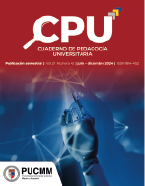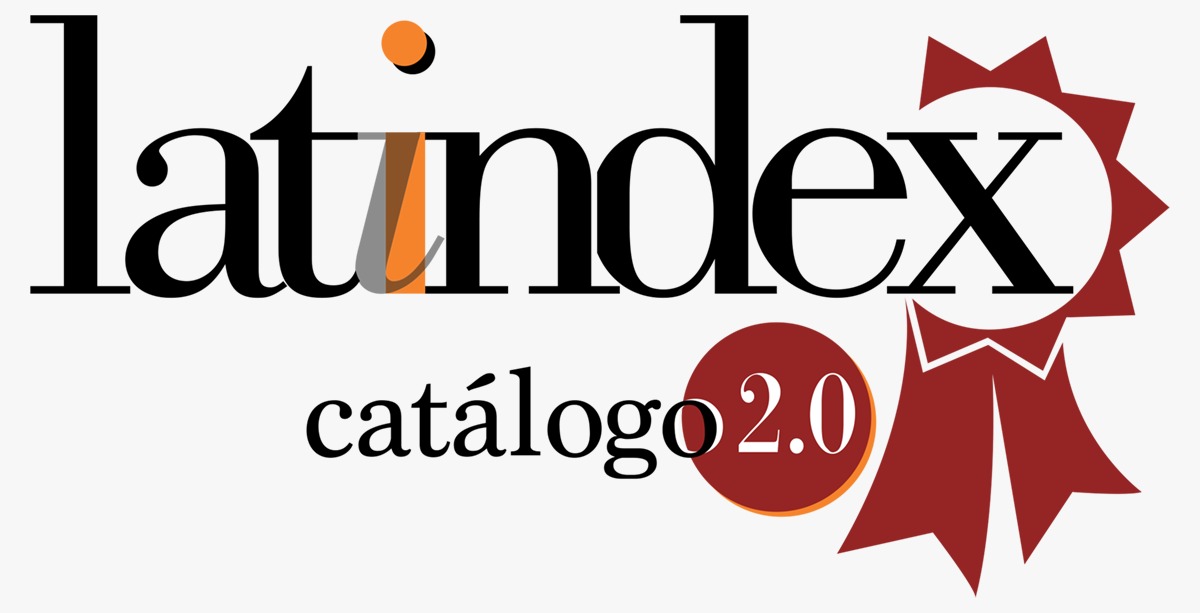Demystifying the use of neuromyths in education
DOI:
https://doi.org/10.29197/cpu.v21i42.611Keywords:
neuromyths, neuroscience, brain, educationAbstract
In recent years, neuroscience has been gaining more and more relevance in the educational field. With access to the Internet, the amount of information is increasing and, when the necessary knowledge to discriminate it is not available, it can lead to the proliferation of neuromyths. In this context, the need arises to address the problem of the proliferation of false assumptions about the brain in education. The main objective of this theoretical review essay is to identify and demystify two widespread neuromyths in the educational field, that of the dominance of one hemisphere and that which states that the brain only uses ten percent of its capacity. Thus, the possible origin of each one will be analyzed in order to identify the unscientific bases that support them, seeking to clarify their real meaning and the scientific weaknesses that make them neuromyths. Neuroimaging studies have shown that both hemispheres of the brain are actively involved in most cognitive tasks, thus disproving the theory of hemispheric dominance. Likewise, research in neuroscience has revealed that virtually all areas of the brain have some active function, refuting the idea that we only use ten percent of our brain capacity. In conclusion, the importance of strengthening teacher training in neuroscience through qualified institutes and through the design of curricula validated by the scientific community is emphasized, avoiding falling into courses with weak scientific foundations. Integrating neuroscience in the initial training of educators is crucial to overthrow erroneous beliefs rooted in teaching practices.
Metrics
References
Alonso, J. (2021, 25 de noviembre). El mito del cerebro izquierdo y el cerebro derecho. José Ramón Alonso. https://acortar.link/WLEBjZ
Andrés, M., Canet, L. y Richard’s, M. (Comps.). (2016). ¿Cómo podemos transformar nuestras escuelas? Estrategias para fomentar la autorregulación en la escuela primaria. Instituto de Psicología Básica, Aplicada y Tecnología; Secretaría de Extensión y Transferencia, Facultad de Psicología, UNMDP; Universidad Nacional de Mar del Plata.
Barraza, P. y Leiva, I. (2019). Neuromitos en educación: Prevalencia en docentes chilenos y el rol de los medios de difusión. Paideia Revista De Educación, (63), 17–40. https://revistas.udec.cl/index.php/paideia/article/view/1166
Beck, D. (2010). The appeal of the brain in the popular press. Perspectives on Psychological Science, 5(6), 762–766. doi.org/10.1177/1745691610388779
Beyerstein, B. (1987, 17 de septiembre). The brain and consciousness: Implications for psi phenomena. The Skeptical Inquirer, 12(2), 163–173. https://www.scientificamerican.com/article/do-we-really-use-only-10/
Brockington, G., & Mesquita, L. (2016). As consequências da má divulgação científica. Revista da Biologia, 15(1), 9–14. doi.org/10.7594/revbio.15.01.03
Campos, A. (2010). Neuroeducación: uniendo las neurociencias y la educación en la búsqueda del desarrollo humano. La Educación, Revista Digital, (143). 1–14. https://hdl.handle.net/11537/25280
Corballis, M. (2014). Left Brain, Right Brain: Facts and Fantasies. PLoS Biol, 12(1), Article e1001767. doi.org/10.1371/journal.pbio.1001767
Crossman, A. y Neary, D. (2019). Neuroanatomía. Elsevier Health Sciences.
Cytowic, R. (2014, enero). What percentage of your brain do you use? [Video]. TED Conferences. https://ed.ted.com/lessons/what-percentage-of-your-brain-do-you-use-richard-e-cytowic
Dehaene, S. (2016). El cerebro matemático. Cómo nacen, viven y a veces mueren los números en nuestra mente. Siglo XXI Editores.
Dehaene, S. (2019). ¿Cómo aprendemos? Siglo XXI Editores.
Dekker, S., Lee, N., Howard-Jones, P., & Jolles, J. (2012). Neuromyths in education: Prevalence and predictors of misconceptions among teachers. Frontiers in Psychology, 3. https://www.frontiersin.org/articles/10.3389/fpsyg.2012.00429/full
Díaz-Véliz, G. y Kunakov-Pérez, N. (2023). Realidad y ficción en neurociencias. Prevalencia de neuromitos entre docentes universitarios de ciencias de la salud. FEM, 26(2), 67–73. doi.org/10.33588/fem.262.1266
Dündar, S., & Gündüz, N. (2016). Misconceptions regarding the brain: the neuromyths of preservice teachers. Mind, Brain, and Education, 10(4), 212–232. https://doi.org/10.1111/mbe.12119
Edelsztein, V. (2022, 25 de febrero). Cómo nace el mito de que existe un hemisferio del cerebro dominante y eso determina si somos más racionales o creativos. Chequeado. https://tinyurl.com/mw3tv4es
Ekuni, R., & Pompéia, S. (2016). O impacto da divulgação científica na perpetuação de neuromitos na educação. Revista da Biologia, 15(1), 1–8. https://doi.org/10.7594/revbio.15.01.02
Federmeier, K., Wlotko, E., & Meyer, A. (2008). What's "right" in language comprehension: ERPs reveal right hemisphere language capabilities. Lang Linguist Compass, 2(1), 1–17. doi.org/10.1111/j.1749-818X.2007.00042.x
Ferreira, R. (2018). ¿Neurociencia o neuromitos? Avanzando hacia una nueva disciplina. En J. Osorio y M. Gloël. (Eds.), La didáctica como fundamento del desarrollo profesional docente: enfoques, tendencias y avances (pp. 28–46). Ediciones UCSC. https://acortar.link/Mp8wJ9
Flores-Ferro, E., Maureira-Cid, F., Cárdenas-Begazo, S., Escobar-Ruiz, N., Cortés-Cortés, M., Hadweh-Briceño, M., González-Flores, P., Koch-Alegría, T. y Soto-Jordan, N. (2021). Prevalencia de neuromitos en académicos universitarios de Chile. Revista Ecuatoriana de Neurología, 30(2), 26–33. https://doi.org/10.46997/revecuatneurol30200026
Forés, A. (2015). Dos hemisferios, dos mentes: ¿dos estilos de aprendizaje? En A. Forés, J. Gamo, J. Guillén y T. Hernández, Neuromitos en educación: El aprendizaje desde la neurociencia (pp. 50–60). Plataforma Editorial.
Gamo, J. y Trinidad, C. (2015). ¿Utilizamos solo el 10 % de nuestro cerebro? En A. Forés, J. Gamo, J. Guillén y T. Hernández, Neuromitos en educación: El aprendizaje desde la neurociencia (pp. 106–116). Plataforma Editorial.
García, J. y Lillo, C. (2023, 3 de mayo). Ni la creatividad está a la derecha ni la lógica a la izquierda: el neuromito de los hemisferios cerebrales. The Conversation. https://tinyurl.com/mwnsz3x2
Geake, J. (2008). Neuromythologies in education. Educational Research, 50(2), 123–133. https://doi.org/10.1080/00131880802082518
Gleichgerrcht, E., Lira, B., Salvarezza, F., & Lucia, A. (2015). Educational Neuromyths Among Teachers in Latin America. Mind, Brain, and Education, 9(3), 170–178. https://doi.org/10.1111/mbe.12086
Goswami, U. (2006). Neuroscience and education: from research to practice? Nature Reviews Neuroscience, 7, 2–7. https://doi.org/10.1038/nrn1907
Hammond, C. (2013, 27 de mayo). ¿Realmente sólo usamos el 10% de nuestro cerebro? BBC News Mundo . https://tinyurl.com/c96zu7fd
Herculano-Houzel, S. (2002). Do You Know Your Brain? A Survey on Public Neuroscience Literacy at the Closing of the Decade of the Brain. The Neuroscientist: a review journal bringing neurobiology, neurology and psychiatry, 8(2), 98–110. http://dx.doi.org/10.1177/107385840200800206
Hermida, M., Segretin, M., Soni, A., & Lipina, J. (2016). Conceptions and misconceptions about neuroscience in preschool teachers: a study from Argentina. Educational Research, 58(4), 457–472. https://doi.org/10.1080/00131881.2016.1238585
Hines, T. (1987). Left Brain/Right Brain Mythology and Implications for Management and Training. The Academy of Management Review, 12(4), 600–606. https://doi.org/10.2307/258066
Howard-Jones, P. (2014). Neuroscience and education: Myths and messages. Nature Reviews Neuroscience, 15(12), 817–824. https://www.researchgate.net/publication/266945518
Kadosh, R. (2007). The laterality effect: myth or truth? Consciousness and Cognition, 17(1), 350–354. doi.org/10.1016/j.concog.2007.03.008
Lindell, A., & Kidd, E. (2013). Consumers Favor “Right Brain” Training: The Dangerous Lure of Neuromarketing. Mind, Brain, and Education, 7(1), 35–39. https://doi.org/10.1111/mbe.12005
Macdonald, K., Germine, L., Anderson, A., Christodoulou, J., & McGrath, L. (2017). Dispelling the Myth: Training in Education or Neuroscience Decreases but Does Not Eliminate Beliefs in Neuromyths. Frontiers in Psychology, 8. https://doi.org/10.3389/fpsyg.2017.01314
Manes, F. (2017, 24 de agosto). Neurociencias y educación: qué es importante para el aprendizaje. Infobae. https://tinyurl.com/5dh9njp4
Medel, M. y Camacho, J. (2019). La neurociencia aplicada en el ámbito educativo. El estudio de los neuromitos. International Journal of New Education, (3), https://doi.org/10.24310/IJNE2.1.2019.6559
Misson, J. (2017, 19 de diciembre). The 10 Most Famous Neuromyths by Philippe Lacroix. Wooclap. https://tinyurl.com/y33yjw34
Nielsen, J., Zielinski, B., Ferguson, M., Lainhart, J., & Anderson, J. (2013). An evaluation of the left-brain vs. right-brain hypothesis with resting state functional connectivity magnetic resonance imaging. PLoS ONE, 8(8), Article e71275. doi.org/10.1371/journal.pone.0071275
Organisation for Economic Co-operation and Development. (2002). Understanding the Brain: Towards a New Learning Science. OECD.
Organisation for Economic Co-operation and Development. (2023a). Neuromyth 6. OECD. https://www.oecd.org/education/ceri/neuromyth6.htm
Organisation for Economic Co-operation and Development. (2023b). Neuromyth 4. OECD. https://www.oecd.org/education/ceri/neuromyth4.htm
Painemil, M., Manquenahuel, S., Biso, P. y Muñoz, C. (2021). Creencias versus conocimiento en futuro profesorado. Un estudio comparado sobre neuromitos a nivel internacional. Revista Electrónica Educare, 25(1), 246–267. https://dx.doi.org/10.15359/ree.25-1.13
Purdy, N. (2008). Neuroscience and education: how best to filter out the neurononsense from our classrooms? Irish Educational Studies, 27(3), 197–208. https://doi.org/10.1080/03323310802242120
Purdy, N., & Morrison, H. (2009). Cognitive neuroscience and education: unraveling the confusion. Oxford Review of Education, 35(1), 99–109. https://doi.org/10.1080/03054980802404741
Radford, B. (1999). The ten-percent myth. Skeptical Inquirer, 23(2), 52–53.
Raichle, M., & Mintun, M. (2006). Brain work and brain imaging. Annual Review of Neuroscience, 29, 449–476. doi.org/10.1146/annurev.neuro.29.051605.112819
Rato, J., Abreu, A., & Castro-Caldas, A. (2013). Neuromyths in education: what is fact and what is fiction for Portuguese teachers? Educational, 55(4), 441–453, doi.org/10.1080/00131881.2013.844947
Rosenbaum, K. (2018, 26 de julio). Derribando neuromitos. Universidad ISEP. https://tinyurl.com/yjt82xdz
Sigman, M., Peña, M., Goldin, A., & Ribeiro, S. (2014). Neuroscience and education: Prime time to build the bridge. Nature Neuroscience, 17, 497–502. doi.org/10.1038/nn.3672
Simoes, E., Foz, A., Petinati, F., Marques, A., Sato, J., Lepski, G., & Arévalo, A. (2022). Neuroscience Knowledge and Endorsement of Neuromyths among Educators: What Is the Scenario in Brazil? Brain Sci, 12(6), https://doi.org/10.3390/brainsci12060734
Sylvan, L., & Christodoulou, J. (2010). Understanding the role of neuroscience in brain based products: A guide for educators and consumers. Mind, Brain, and Education, 4, 1–7. https://doi.org/10.1111/j.1751-228X.2009.01077.x
Tardif, E., Doudin, P.-A., & Meylan, N. (2015). Neuromyths Among Teachers and Student Teachers. Mind, Brain, and Education, 9(1), 50–59. https://doi.org/10.1111/mbe.12070
Torrijos-Muelas, M., González-Víllora, S., & Bodoque-Osma, A. (2021). The Persistence of Neuromyths in the Educational Settings: A Systematic Review. Frontiers in Psychology, 11. https://doi.org/10.3389/fpsyg.2020.591923
Varas-Genestier, P. y Ferreira, R. (2017). Neuromitos de los profesores chilenos: orígenes y predictores. Estudios pedagógicos (Valdivia), 43(3), 341–360. https://dx.doi.org/10.4067/S0718-07052017000300020
Wager, T., Luan, K., Liberzon, I., & Taylor, S. (2003). Valence, gender, and lateralization of functional brain anatomy in emotion: a meta-analysis of findings from neuroimaging. Neuroimage, 19(3), 513–531. doi.org/10.1016/s1053-8119(03)00078-8
Weisberg, D., Keil, F., Goodstein, J., Rawson, E., & Gray, J. (2008). The seductive allure of neuroscience explanations. Journal of Cognitive Neuroscience, 20(3), 470–477. doi.org/10.1162/jocn.2008.20040
Zhang, R., Jiang, Y., Dang, B., & Zhou, A. (2019). Neuromyths in Chinese classrooms: evidence from headmasters in an underdeveloped region of China. Frontiers in Education, 4, 1–6. https://doi.org/10.3389/feduc.2019.00008
Published
How to Cite
Issue
Section
License
Copyright (c) 2024 Los autores/as conservan los derechos de autor y ceden a la revista el derecho de la primera publicación.

This work is licensed under a Creative Commons Attribution-NonCommercial-ShareAlike 4.0 International License.
Unless otherwise indicated, all articles in this journal are published under a
Licencia Internacional Creative Commons 4.0 Atribución-NoComercial-CompartirIgual .
The authors retain the copyright and assign the right to the first publication to the magazine.









